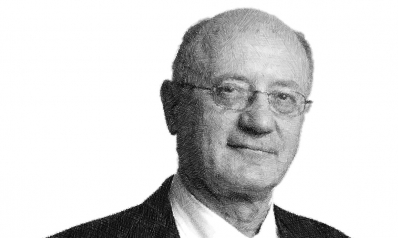Confronting Big Fears About Smaller Stocks
by Equity Research, AllianceBernstein
Smaller US stocks were hit harder than their large-cap peers during the January sell-off. We think the harsh treatment is unwarranted and a strong recovery could be in the cards when risk appetite returns.
Sharp downturns in equity markets are never kind to smaller-cap stocks. Over the last seven months, the Russell 2000 Index of smaller-cap stocks has fallen by 22.5%. The Russell 1000 Index of larger-cap stocks fell by only 10.5% over the same period. The slump wiped out the strong performance gains that small-caps had been enjoying over large-caps since the financial crisis in 2008 (Display).

After the correction, valuations look attractive, in our view. When compared with large-caps on several metrics, the relative valuation of smaller stocks hasn’t been this low since the end of 2003 (Display, below). But investors are still wary. Smaller names are still seen as much riskier.

Is the Bad Rap Deserved?
But do all smaller-cap stocks really deserve such a bad reputation? We don’t think so. Although US smaller-caps are risk assets that will be vulnerable in market drawdowns, if you choose the right companies, with solid fundamentals, they aren’t necessarily as dicey over the long term as many investors believe.
Recent selling has been indiscriminate. Smaller stocks fell sharply across a broad range of sectors, even though individual company profiles are very diverse. Within the SMID-cap universe, there are a wide range of companies with different attributes in terms of valuation, free cash flow, quality and growth. For example, the gap between the most attractive and least attractive stocks on measures of value have widened to levels not seen since 2011. Yet by punishing smaller stocks so harshly, investors are treating them as if they’re all equally dangerous.
The anxiety is inconsistent. While concerns about China, the oil price and global economic growth are real, abandoning all smaller US companies isn’t necessarily the right response, in our view. Smaller companies can adjust business models much faster than their larger peers and can position themselves to weather the current environment more effectively. And smaller US companies get a higher share of their revenue from domestic markets than do larger firms, so they can benefit from the current relative strength of the US economy.
Don’t Focus on the Macro
When choosing smaller stocks, we don’t think macroeconomic analysis is the key to longer-term success. Bottom-up research into the sources of a company’s business advantages and earnings potential should be the focus, even when markets are fixated on economic trends.
That principle is perhaps even more valid today. By focusing on a small slice of the market with much stronger fundamentals, active managers can scoop up stocks with more resilient characteristics and better return potential at attractive valuations.
The trick is to look for companies that have diverse return drivers. In other words, search for companies that are exposed to different types of business trends that aren’t directly driven by economic cycles. For example, look for companies that are restructuring to improve their cash flows, but have not yet been rewarded for their efforts. Or consider companies in the healthcare sector that are exposed to structural growth trends created by the Affordable Care Act, which is boosting patient numbers and transforming industry dynamics.
After the Crisis
Smaller cap stocks often do well after a market meltdown. They outperformed strongly following the global financial crisis, as shown above. Yet it’s almost impossible to time a potential inflection point. So we believe it’s important to be invested before the market turns. During seven small-cap bull markets since 1926, which lasted 5.2 years on average, the average one-year annualized return was 37.3%. But our research shows that if you missed the best month of each bull market, your annualized return would fall to 31.2%. And missing the best five months would cut your returns to 16.2% a year.
When markets are so shaky, it’s easy to understand how anxiety spreads to smaller stocks. Yet it’s also a great opportunity to find smaller companies that can pack a big punch in a recovery. At times like these, we believe investors should consider reallocating to a small- or SMID-cap portfolio, which can offer premium return potential in a broader market recovery.
The views expressed herein do not constitute research, investment advice or trade recommendations and do not necessarily represent the views of all AB portfolio-management teams.
Chief Investment Officer—Small and Mid-Cap Value Equities

James MacGregor was appointed Chief Investment Officer of Small and Mid-Cap Value Equities in 2009. From 2009 to 2012, he also served as CIO of Canadian Value Equities. From 2004 to 2009, MacGregor was director of research of Small and Mid-Cap Value Equities, overseeing coverage of companies for the Small-Cap and Small/Mid-Cap Value services. He started as a research analyst covering the banking, energy, industrial commodity, transportation, and aerospace & defense industries for those same services. Prior to joining the firm in 1998, MacGregor was a sell-side research analyst at Morgan Stanley, where he covered US packaging and Canadian paper stocks. He holds a BA in economics from McGill University, an MSc in economics from the London School of Economics and an MBA from the University of Chicago. MacGregor is a CFA charterholder. Location: New York
Chief Investment Officer—US Small/SMID Cap Growth

Bruce K. Aronow is Chief Investment Officer for US Small/SMID Cap Growth products, a role he has held since 2000. He is also responsible for the US Small/SMID Cap Growth consumer/commercial services sector. Prior to joining the firm in 1999, Aronow was responsible for research and portfolio management for the small-cap consumer and autos/transportation sectors at Invesco (NY) (formerly Chancellor Capital Management). He joined Chancellor in 1994 as a small-cap analyst, primarily focusing on autos/transportation, specialty finance and consumer-related companies. Previously, Aronow was a senior associate with Kidder, Peabody & Co. for five years. He holds a BA with a concentration in philosophy and a minor in economics from Colgate University and served as a recent graduate member on the Board of Trustees of Colgate University from 1990 to 1993. Aronow is a member of both the New York Society of Security Analysts and the Association for Investment Management & Research (AIMR), and is a CFA charterholder. Location: New York
Co-Chief Investment Officer—US Small/SMID Cap Growth

Samantha S. Lau was named Co-Chief Investment Officer of US Small/SMID Cap Growth in October 2014. She was previously a portfolio manager/analyst responsible for research and portfolio management for the technology sector for US Small/SMID Cap Growth. Prior to joining Alliance Capital in 1999, Lau covered small-cap technology companies for INVESCO (NY) (formerly Chancellor Capital Management). Before joining Chancellor in 1997, she worked for three years as a healthcare securities analyst in the investment research department of Goldman Sachs, where she had primary coverage responsibility for the long-term care and physician practice-management industries, as well as for several companies within the pharmaceuticals sector. Lau holds a BS (magna cum laude) in finance and accounting from the Wharton School of the University of Pennsylvania and is a CFA charterholder. Location: New York
Director of Research—Small and Mid-Cap Value Equities

Shri Singhvi was named Director of Research of Small and Mid-Cap Value Equities in July 2014, with responsibility for overseeing coverage of companies for the Small-Cap and Small/Mid-Cap Value services. Previously, he was a senior research analyst on the Small/Mid-Cap Value team, responsible for coverage of financial and technology companies. Prior to joining the firm as a research analyst in 2008, Singhvi was an engagement manager for McKinsey, where he consulted on strategy for technology, media and telecom companies and investment due diligences for hedge funds and private equity clients. Before McKinsey, he spent more than five years in Silicon Valley working as a senior R&D engineer at Applied Materials and as a software solutions architect at i2 Technologies. Singhvi holds a BTech in chemical engineering from the Indian Institute of Technology, Bombay; an MS in chemical engineering from Purdue University; and an MBA from the University of Chicago. Location: New York
Related Posts
Copyright © AllianceBernstein















